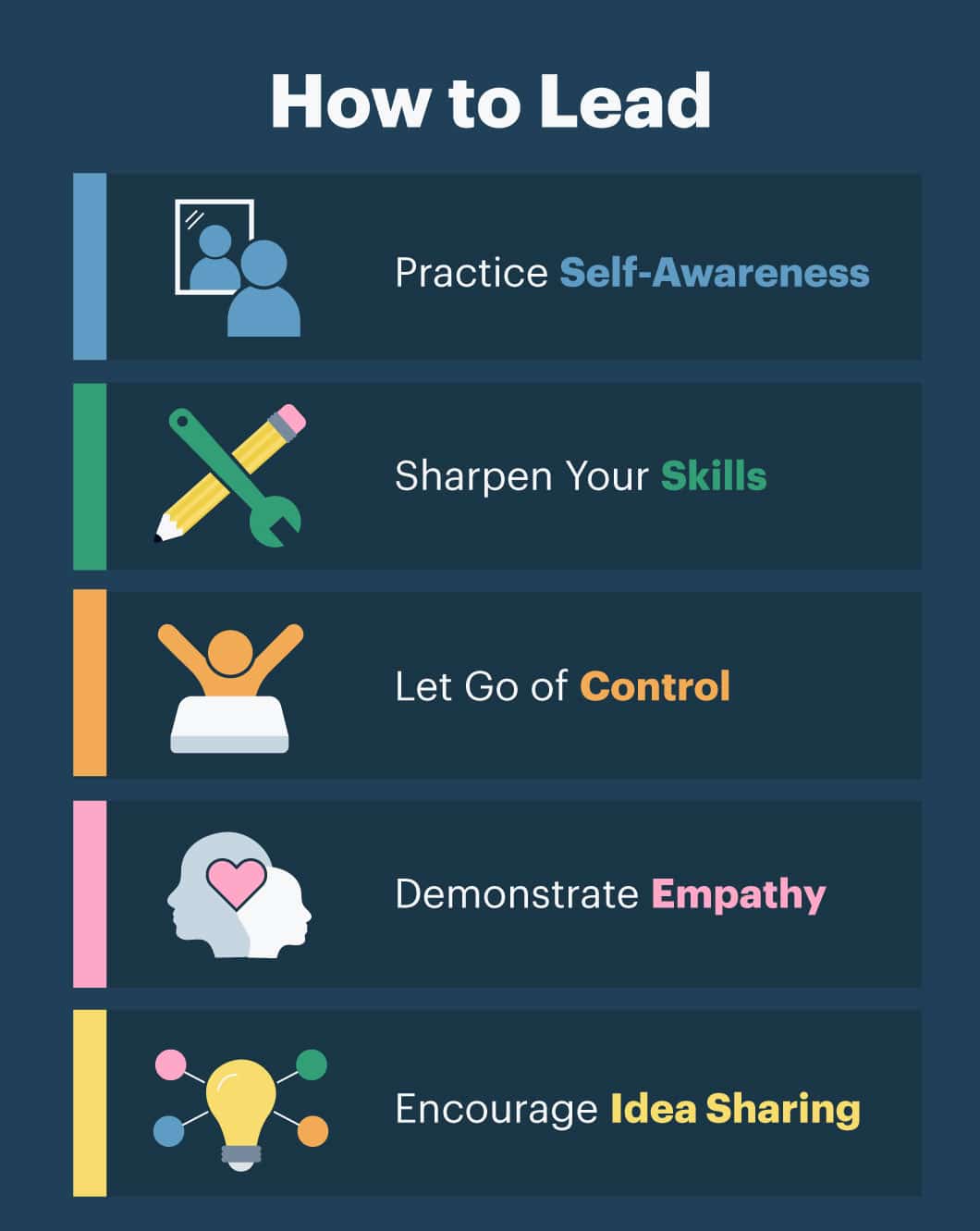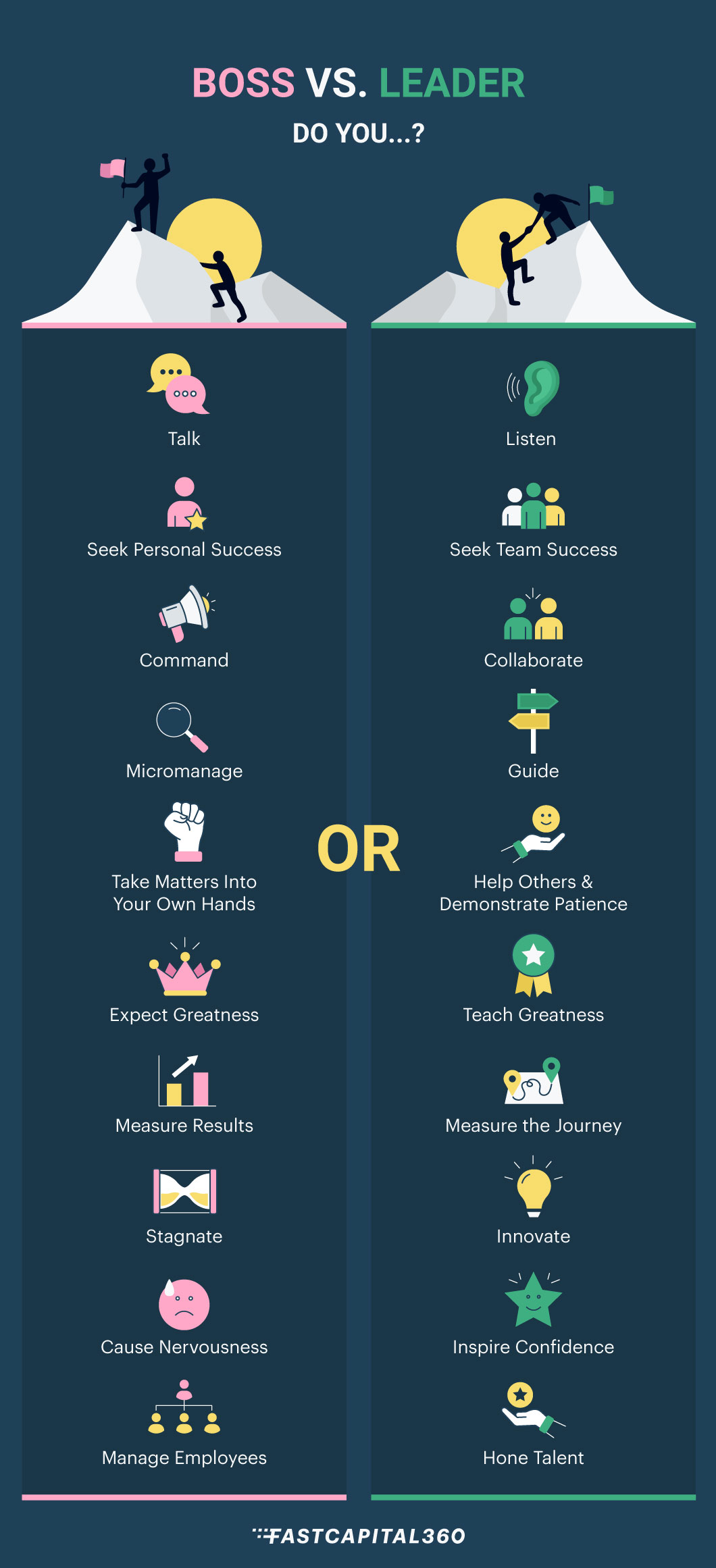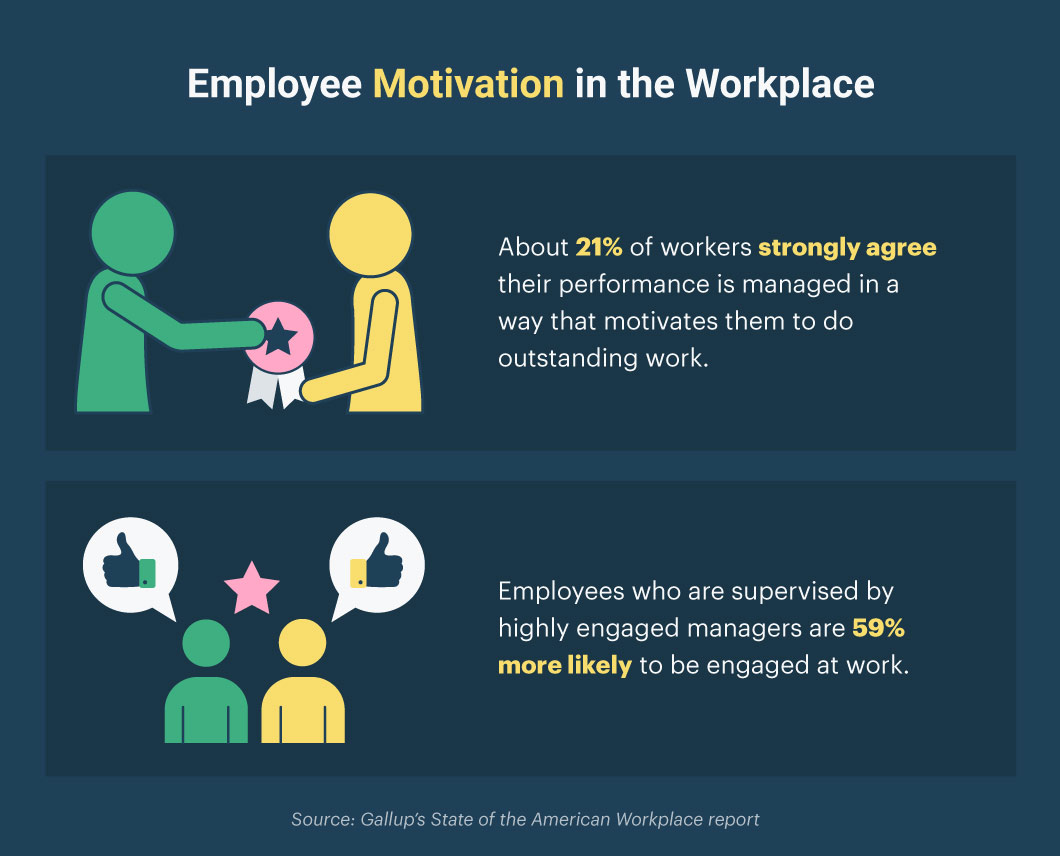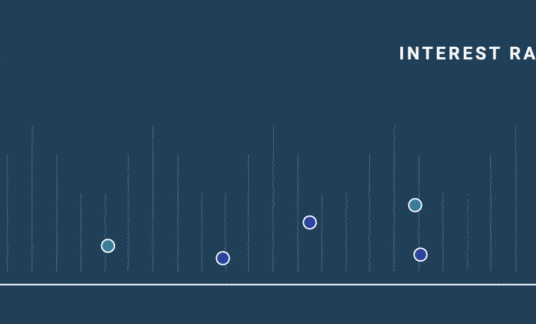Anyone in a position of power can be a boss, but not every boss knows how to be a leader. When a boss is a good leader, employees feel it and are better equipped and motivated to reach their full potential.
We’ll show you the 10 key differences between a boss and a leader so you can learn to inspire your employees to accomplish more and help your business succeed. Also, see boss versus leader quotes from real-life entrepreneurs that will encourage you along your journey.
1. Bosses Talk. Leaders Listen.
Some managers are quick to bark out orders but can struggle with listening. This can rub employees the wrong way. Basic communication skills are one of the most simple but important attributes for anyone in a position of power to possess, and a key difference between being a boss and a leader.
“Conversations with your boss tend to be one-sided, where they speak and you listen,” says Elisa Bender, co-founder of RevenueGeeks.
“Bosses tend to dominate conversations and give little room for others to speak,” Bender adds. Instead, when it comes to being a leader vs. a boss, keep in mind, “Leaders are two-way communicators. They listen first and then talk. They seek the opinions of others around them and use them to make their decisions.”
To evolve into a leader, take pride in listening. Hear the concerns and feedback of your employees.
Listen more than you speak and choose your words with precision. By doing this, your team will respect you more and become more motivated to help you and the rest of the team succeed.
-
“Courage is what it takes to stand up and speak; courage is also what it takes to sit down and listen.”
– Winston Churchill
2. Bosses Are Motivated By Personal Success. Leaders Seek Team Success.
Another distinction when it comes to being a boss vs. a leader is that bosses are generally motivated by their own success, often patting themselves on the back.
In contrast, leaders are concerned with the success of those around them and celebrate their team’s successes.
Effective leaders understand that nothing the company accomplishes would be possible without its employees.
As Brian Dean, founder of Exploding Topics, says, “Leaders say ‘we’; bosses say ‘I.’”
When employees sense a collective we, Dean says, “the office dynamic evolves from ‘trying to make the boss pleased’ to a sense of teamwork” as well as shared goal-setting and accomplishment.
Dean adds this shared approach “fosters the responsibility and community that are so important in today’s workplace.”
-
“What I have learned is that people become motivated when you guide them to the source of their own power and when you make heroes out of employees who personify what you want to see in the organization.”
– Anita Roddick
3. Bosses Command. Leaders Collaborate.
Sometimes boss and leader differences come down to business management style. A boss’s approach to management can be more abrasive than that of someone who possesses natural leadership skills. Bosses may push their staff too hard or hold them to unrealistic standards that workers can’t live up to.
“The boss-subordinate relationship may be summed up by two words: command and obedience,” says Jacob Villa, co-founder of School Authority, what Villa refers to as vertical authority, which relies on organizational hierarchies. “There is little to no room for subordinates to provide input and ideas.”
This can cause issues inside the company as employees try to find ways to deal with the demands, some of which can lead to subpar work and even resentment of their supervisors.
“On the other hand, leaders tend to prefer a more horizontal authority structure wherein teamwork and collaboration is encouraged,” notes Villa.
Good leaders direct the actions employees should take, instead of demanding things be done. They focus on the team’s process before the result. They are adept at putting themselves in their employees’ shoes.
Villa adds leaders often actively work with subordinates, and “lower-ranking officers and employees can freely voice their ideas and concerns without fear of upsetting the leader.”
-
“The key to successful leadership is influence, not authority.”
– Kenneth H. Blanchard
4. Bosses Micromanage. Leaders Guide.
Chris Westmeyer, president at Caring Advisor, says “Bosses can often be seen micromanaging and asserting themselves on employees and their tasks.”
Westmeyer adds, “Leaders, on the other hand, implement a sense of self-belief and determined work ethic, which ultimately leads to employees being accountable themselves.”
A person who leads excels at focusing on what needs the most attention and delegates other work.
Employees who feel valued are much more productive than those who are constantly looking over their shoulders.
“A true leader will always want to support his/her employees and create a team that wants to work for the vision of the company,” says Westmeyer.
-
Motivating Employees
About 21% of workers strongly agree their performance is managed in a way that motivates them to do outstanding work, according to Gallup’s State of the American Workplace report.
Employees who are supervised by highly engaged managers, though, are 59% more likely to be engaged at work.
5. Bosses Rush. Leaders Are Patient.
One of the most difficult tasks for someone transitioning to a managerial role is going from doing the work to supervising it. This is another key difference between a leader vs. a boss.
When things aren’t getting done the way they want them, bosses may opt to take matters into their own hands. However, being a leader is all about helping your employees do their jobs more effectively. Leaders are able to practice patience and understand where their employees are experiencing issues.
-
“My job is not to be easy on people. My job is to take these great people we have and to push them and make them even better.”
– Steve Jobs
6. Bosses Expect Greatness. Leaders Teach It.
To have an effective leadership style you must also be a great teacher. Bosses expect their employees to know the best way to accomplish tasks, even if they’re new to them. The best managers teach their employees the most efficient way to do their jobs. They actively seek ways to help develop their workers’ skill sets and create learning opportunities to help them grow.
By taking the time to understand and educate your employees, you’ll find it easier to achieve results in a more efficient process.
7. Bosses Measure Results. Leaders Measure the Journey.
“Bosses are typically focused on metrics and goals,” says Janis Thies, chief executive officer (CEO) of SEOlutions, and “concentrate their efforts on processes and rules.”
“Although leaders concern themselves with similar things, they are particularly looking at ways to innovate,” he says.
This is just another example of what separates a boss from a leader. Frequently, bosses focus on the bottom line, while leaders focus on how they got there and where they can go from there.
-
“Successful leaders see the opportunities in every difficulty rather than the difficulty in every opportunity.”
– Reed Markham
8. Bosses Are Stagnant. Leaders Are Innovative.
When it comes to leadership vs. boss tendencies, bosses often operate based on what they already know. If something used to work, they tend to believe it will always work.
Leaders, however, are able to adapt. They are constantly reevaluating processes to improve.
Leaders bring a refreshing energy to the workplace, look for new ways to accomplish goals and ask employees to present new ideas when they have them.
They show their employees they’re invested in always finding the best way to succeed and value their opinions on how they can help take the business to the next level.
-
“Leadership is the art of giving people a platform for spreading ideas that work.”
– Seth Godin
9. Bosses Cause Nervousness. Leaders Inspire Confidence.
Perhaps one of the most important differences between a boss versus a leader is how they affect the emotions of the people who work for them.
While bosses may create an atmosphere of fear and discouragement, leaders create a safe space that nurtures employees.
If an employee goes into work every day hoping they don’t have to speak with you, you aren’t getting the most out of them.
In contrast, “A leader inspires their team to want to achieve more, to want to be the best version of themselves and work harder than ever before,” says Johannes Larsson, founder of Financer.com. “Not to compete with others but to compete with their former selves. A leader connects you with your ‘why.’”
“You need to be somebody that others want to be around, learn from, follow in the footsteps of and wholeheartedly respect.”
-
“The day soldiers stop bringing you their problems is the day you have stopped leading them. They have either lost confidence that you can help or concluded you do not care. Either case is a failure of leadership.”
– Colin Powell
10. Bosses Manage Employees. Leaders Hone Talent.
Our final difference between a leader and a boss is that “Bosses will often look for workers who all think the same” and they often think that “hiring top talent means they will need to replace them in a few years as they move on,” says Jayson Waller, founder and CEO of Powerhome Solar.
In contrast, “leaders don’t get intimidated because they realize hiring and developing people means more pathways open up and everyone rises,” Waller says.
“Great leaders see the big picture and aren’t intimidated by the talent around them because they recognize how much they need a team who is hungry, holds integrity and understands what it means to enhance and protect the brand,” he says.
Waller says, “Great leaders surround themselves with people who think differently,” understanding the benefit of a team with diverse strengths and skill sets.

How to Transition from a Boss to a Leader
Now that you understand the differences between a boss and a leader, how do you evolve? Transitioning to a leadership mindset can be challenging, but having the willingness to understand and the patience to listen to your employees are key to making that shift.
Here are a few quick fixes you can implement to help you become a great leader:
Practice Self-Awareness
“Something that makes a great leader is understanding one’s own weaknesses, so bosses should take the time to examine where they are lacking,” says Brian Donovan, CEO of Timeshatter. “Then, they need to consciously make the decision to work on being a better leader every day. You aren’t going to be able to become one overnight.”
You can build self-awareness in several ways:
- Notice your patterns of behavior
- Ask for feedback from interested parties
- Seek relevant mentorship opportunities
- Ask yourself “what” questions (e.g., What is working well? What could be improved?)
Sharpen Your Skills
“Making the shift requires gaining new skills,” says Bonnie Hagemann, CEO of Executive Development Associates.
“The person who is a boss and not yet a leader will need to understand what it means to create a compelling vision and engage other people around them,” notes Hagemann.
“They will have to learn the skill and be willing to change. They will also want to empower their employees and ensure that they have all of the resources and education needed to do their job.”
To transition from a boss to a leader, Jim Barnish, co-founder and managing partner of Orchid Black, suggests reading John C. Maxwell’s “How Successful People Lead,” which speaks to the 5 levels of leadership:
- Level 1: Position – People lead because they have to.
- Level 2: Permission – People follow you because they want to and they permit you to lead them.
- Level 3: Production – People follow because of what you’ve done for the organization.
- Level 4: People Development – People follow because of what you’ve done for them.
- Level 5: Pinnacle – You’ve earned a positive reputation and people follow you because of who you are and what you represent.
Let Go of Control
Barnish adds, “The shift from boss to leader is counterintuitive on the surface: You have to let go of control. This is what separates bosses from leaders.”
“By letting go of control, you are empowering and influencing your people to own their job,” notes Barnish.
In this vein, “Think about how to help your employees develop and start making decisions on their own,” advises Cecilia Hunt, CEO of JourneyPure.
“You might start to put into place processes to provide constructive feedback to your team, recognize their strengths and achievements and guide them how to handle situations better,” Hunt says.
-
Giving Employees Feedback
According to Gallup’s State of the American Workplace report, 23% of employees strongly agree their managers give them valuable feedback, and 26% strongly agree the feedback they’re given helps them perform better at work.
Demonstrate Empathy
According to a study by Businesssolver, approximately 70% of employees believe empathy drives motivation. What’s more, empathetic businesses have been shown to have better performance and stronger workplace cultures.
Needless to say, understanding your employees and being aware and sensitive to their feelings is a soft skill good leaders master.
Here are some ways you can demonstrate empathy as a leader:
- Actively listen
- Show sincere interest
- Be on the lookout for burnout
- Demonstrate compassion
- Pick up on verbal and nonverbal cues
Encourage Sharing of Ideas
Additionally, in terms of being a leader vs. a boss, some of the best leaders know how to engage employees and inspire open communication. New ideas and creativity are celebrated. The goal is to come together to innovate for the good of the company.
Here are some ways you can motivate employees to contribute their thoughts openly:
- Have brainstorming sessions
- Be open to sharing yourself
- Reward employees for sharing
- Encourage impromptu, informal communication
- Provide multiple platforms to share ideas












